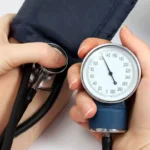
In the realm of modern medicine, few discoveries have had as profound an impact as penicillin. This remarkable antibiotic, first discovered by Alexander Fleming in 1928, revolutionized the treatment of bacterial infections and has saved countless lives over the decades. From its cultural significance to its role in surgical safety, penicillin’s story is one of innovation and progress. In this blog, we will explore 25 fascinating facts about penicillin that highlight its historical importance, medical advancements, and ongoing relevance in both human and veterinary medicine. Whether you’re a healthcare professional, a history enthusiast, or simply curious about this groundbreaking drug, these insights will deepen your appreciation for penicillin and its place in the annals of medical history. Join us as we delve into the world of penicillin and uncover the remarkable journey of this life-saving antibiotic!
Accidental Discovery: In 1928, Alexander Fleming, a Scottish bacteriologist, made a groundbreaking discovery that would change medicine forever. While conducting experiments at St. Mary’s Hospital in London, he noticed that a petri dish containing Staphylococcus bacteria had been contaminated by mold. The mold, identified as Penicillium notatum, was inhibiting the growth of the bacteria around it. This observation led Fleming to hypothesize that the mold produced a substance capable of killing bacteria, which he later named penicillin. This serendipitous find marked the beginning of the antibiotic era.
Moldy Origins: Penicillin is derived from the mold species known as Penicillium notatum, which is part of the larger Penicillium genus. This mold can be found in various environments, including soil and decaying organic matter. The antibiotic properties of penicillin stem from the mold’s natural defense mechanism against bacterial infections. By producing penicillin, the mold effectively protects itself from being overtaken by bacteria, showcasing a fascinating example of nature’s ingenuity in chemical warfare.
Fleming’s Messy Lab: Alexander Fleming’s laboratory was famously cluttered, often described as chaotic. This untidy environment played a crucial role in his discovery of penicillin. The accidental contamination of his petri dishes with mold spores was facilitated by the disarray, as the spores could easily drift into exposed dishes. Fleming’s lack of meticulousness, which might have been seen as a drawback, ultimately led to a moment of scientific serendipity that would revolutionize medicine and save countless lives.
Initial Skepticism: Despite the promising initial findings, the scientific community was initially skeptical about the potential of penicillin as a viable antibiotic. Many researchers doubted its effectiveness and questioned whether it could be mass-produced and used safely in humans. It wasn’t until the late 1930s and early 1940s, when Howard Florey and Ernst Boris Chain conducted further research and clinical trials, that penicillin’s therapeutic potential was validated. Their efforts demonstrated its ability to treat severe bacterial infections, paving the way for its widespread acceptance.
World War II Savior: During World War II, penicillin emerged as a lifesaving medical breakthrough. The antibiotic was used extensively to treat infected wounds among soldiers, significantly reducing the incidence of gangrene and the need for amputations. Its ability to combat bacterial infections that arose from battlefield injuries was invaluable, and it is estimated that penicillin saved hundreds of thousands of lives during the war. The urgent demand for penicillin during this time led to advancements in its mass production, ensuring that it was available to those in need.
First Antibiotic: Penicillin holds the distinction of being the first true antibiotic used to treat bacterial infections. Its discovery marked a pivotal moment in medical history, as it opened the door to the development of numerous other antibiotics. Before penicillin, treatment options for bacterial infections were limited, often relying on surgery or ineffective remedies. The introduction of penicillin revolutionized the treatment of infections, allowing doctors to effectively manage previously life-threatening conditions.
Nobel Prize: In recognition of their groundbreaking work on penicillin, Alexander Fleming, Howard Florey, and Ernst Boris Chain were awarded the Nobel Prize in Physiology or Medicine in 1945. This prestigious honor acknowledged their contributions to the field of medicine and the profound impact of penicillin on public health. The Nobel Prize highlighted the importance of teamwork in scientific research, as Fleming’s initial discovery combined with Florey and Chain’s efforts to develop and produce penicillin brought about a medical revolution.
Mass Production: The mass production of penicillin began in the early 1940s, driven by the urgent need for effective treatments during World War II. Researchers developed methods to cultivate Penicillium mold on a large scale, enabling the extraction and purification of penicillin in significant quantities. This process involved fermentation techniques that allowed for higher yields of the antibiotic. The successful mass production of penicillin made it widely accessible, transforming the landscape of medicine and making it a staple in hospitals worldwide.
Bacterial Cell Walls: Penicillin exerts its antibacterial effects by targeting the cell walls of bacteria. It inhibits the synthesis of peptidoglycan, a crucial component of bacterial cell walls, leading to structural weakness. As a result, the bacteria are unable to maintain their shape and integrity, causing them to burst and die. This mechanism of action is particularly effective against Gram-positive bacteria, which possess a thick peptidoglycan layer. Penicillin’s ability to selectively target bacterial cells while leaving human cells unharmed is a key reason for its safety and efficacy as an antibiotic.
Selective Targeting: One of the remarkable features of penicillin is its selective targeting of bacterial cells. Unlike many other treatments that may indiscriminately affect both bacteria and human cells, penicillin specifically interferes with the synthesis of bacterial cell walls. This selective action is due to the unique structures present in bacteria that are not found in human cells, allowing penicillin to effectively eliminate harmful bacteria without harming the host. This specificity makes penicillin a safe choice for treating bacterial infections, contributing to its widespread use in both human and veterinary medicine.
Broad Spectrum: Penicillin is recognized for its broad-spectrum efficacy against a wide range of bacterial pathogens. It is particularly effective against Gram-positive bacteria, including strains responsible for common infections such as pneumonia, strep throat, and syphilis. Its ability to combat various bacterial infections has made it an essential tool in clinical settings. Over the years, modifications and derivatives of penicillin have been developed to enhance its spectrum of activity, allowing it to target a broader array of bacteria, including some Gram-negative organisms.
Resistance Concerns: While penicillin has been a revolutionary antibiotic, its overuse and misuse have led to significant concerns regarding antibiotic resistance. Bacteria can evolve and develop mechanisms to survive the effects of penicillin, rendering the antibiotic ineffective. This resistance poses a serious public health challenge, as infections caused by resistant strains can be more difficult to treat and may require alternative, often more expensive or toxic, medications. Ongoing research is focused on understanding the mechanisms of resistance and developing strategies to mitigate this growing problem.
Allergy Awareness: Allergy to penicillin is one of the most common drug allergies reported by patients. Reactions can range from mild skin rashes to severe anaphylaxis, a life-threatening condition that requires immediate medical attention. It is estimated that about 10% of patients report a penicillin allergy, but many of these cases may not be true allergies. Awareness of penicillin allergies is crucial for healthcare providers, as it influences treatment decisions and the choice of antibiotics, ensuring that patients receive safe and effective care.
Synthetic Variants: In response to the challenge of antibiotic resistance and the need for broader efficacy, scientists have developed synthetic variants of penicillin. These modifications aim to enhance the antibiotic’s effectiveness against resistant bacteria and expand its therapeutic applications. Examples include amoxicillin and methicillin, which have been engineered to resist degradation by certain bacterial enzymes. These synthetic derivatives maintain the core structure of penicillin while providing improved activity against a wider range of bacterial infections, thus continuing the legacy of penicillin in modern medicine.
Ongoing Research: Research on penicillin and its derivatives continues to be a vibrant area of study in microbiology and pharmacology. Scientists are investigating ways to enhance the efficacy of penicillin, reduce the development of resistance, and explore its potential applications in treating other conditions. Ongoing studies also focus on understanding the biochemical mechanisms of action and the interactions between penicillin and various bacterial species. This research is vital for ensuring that penicillin remains a cornerstone of antibiotic therapy in the face of evolving bacterial threats.
Global Access: Penicillin is one of the most widely used antibiotics globally, with its availability being a crucial factor in treating bacterial infections across diverse healthcare settings. It is particularly important in developing countries, where access to essential medicines can be limited. Efforts to ensure the global distribution of penicillin have been instrumental in improving public health outcomes, reducing mortality rates from bacterial infections, and making it an essential medicine recognized by the World Health Organization (WHO). Its widespread availability underscores the importance of antibiotics in modern healthcare.
Moldy Bread Myth: A prevalent myth suggests that consuming moldy bread can cure infections, likely stemming from the association between penicillin and mold. However, this notion is misleading and potentially dangerous. While penicillin is derived from a specific mold, not all molds produce safe or effective substances. In fact, many molds can be toxic or harmful if ingested. It is essential to understand that penicillin should only be administered in controlled medical environments, where its purity and dosage can be ensured, rather than relying on unverified home remedies.
Penicillin in Space: NASA has conducted studies on penicillin in space to understand how microgravity affects its production and effectiveness. Research has shown that the growth patterns of Penicillium mold can change in space environments, potentially influencing the yield and potency of penicillin. These studies not only provide insights into the behavior of biological systems in space but also have implications for future medical applications and the development of pharmaceuticals for long-duration space missions, where access to medical supplies may be limited.
Cultural Impact: Penicillin, discovered in 1928 by Alexander Fleming, has had a profound influence on popular culture, often referenced in various forms of media. Its introduction marked a revolution in medicine, leading to the portrayal of antibiotics in films, books, and television shows that explore themes of disease, healing, and the human experience. For instance, movies that depict wartime medicine often highlight penicillin as a crucial development that saved countless lives, emphasizing its role in shaping modern healthcare narratives. This cultural representation not only underscores the significance of penicillin but also raises awareness about the importance of antibiotics in society.
Penicillin Museum: The Penicillin Museum in London serves as a dedicated space to celebrate the history and impact of this groundbreaking antibiotic. Established to educate visitors about the discovery and development of penicillin, the museum showcases artifacts, historical documents, and interactive exhibits. It highlights the journey from Fleming’s initial discovery to the mass production of penicillin during World War II, which played a critical role in treating infected soldiers. The museum not only preserves the legacy of penicillin but also serves as a reminder of the ongoing importance of antibiotics in contemporary medicine.
Reduced Mortality Rates: The introduction of penicillin dramatically transformed healthcare by significantly reducing mortality rates associated with bacterial infections. Prior to its discovery, infections that were once often fatal, such as pneumonia, syphilis, and sepsis, had limited treatment options. With the advent of penicillin, doctors could effectively combat these infections, leading to a marked decline in death rates. For example, during World War II, penicillin was credited with saving thousands of lives on the battlefield, demonstrating its critical role in emergency medicine and public health advancements.
Childhood Illnesses: Penicillin has been instrumental in treating several childhood illnesses, particularly scarlet fever and rheumatic fever. Scarlet fever, caused by the Streptococcus bacteria, can lead to serious complications if untreated. Penicillin effectively eradicates the bacteria, preventing long-term health issues. Similarly, rheumatic fever, which can develop after a strep throat infection, can cause severe heart damage. The use of penicillin in treating these conditions has significantly improved health outcomes for children, reducing the incidence of complications and hospitalizations related to these diseases.
Surgical Safety: The advent of penicillin has greatly enhanced surgical safety by reducing the risk of post-operative infections. Before the widespread use of antibiotics, surgical procedures often resulted in infections that could lead to severe complications or even death. Penicillin’s ability to combat bacterial infections means that patients undergoing surgery can be treated prophylactically, minimizing the risk of infection during recovery. This advancement has allowed for more complex and safer surgical procedures, contributing to improved patient outcomes and a higher standard of care in modern medicine.
Veterinary Use: Penicillin is not only vital in human medicine but also plays a significant role in veterinary practices. It is commonly used to treat infections in animals, including pets and livestock. Veterinarians prescribe penicillin to combat bacterial infections such as pneumonia, skin infections, and abscesses in animals. The effectiveness of penicillin in veterinary medicine contributes to animal health and welfare, ensuring that pets receive appropriate care and that livestock can be treated to prevent the spread of infections, ultimately supporting food safety and agricultural productivity.
Public Awareness: Educating the public about the importance of proper antibiotic use is essential for preserving the efficacy of penicillin and other antibiotics. With the rise of antibiotic resistance, there is a pressing need for awareness campaigns that inform individuals about the responsible use of these medications. Misuse and overuse of antibiotics can lead to resistant strains of bacteria, rendering treatments ineffective. Public health initiatives aim to promote understanding of when antibiotics are necessary, the importance of completing prescribed courses, and the potential consequences of misuse, ensuring that penicillin remains a vital tool in fighting bacterial infections.
Frequently Asked Questions about Penicillin:
1. What is penicillin and how does it work?
Penicillin is an antibiotic that is derived from the Penicillium mold. It works by inhibiting the synthesis of bacterial cell walls, which are essential for their survival. When bacteria attempt to divide, penicillin disrupts the formation of the cell wall, causing the bacteria to burst and die. This mechanism makes penicillin effective against a wide range of Gram-positive bacteria, including Streptococcus and Staphylococcus species.
2. What are the common uses of penicillin?
Penicillin is commonly used to treat various bacterial infections, including:
- Streptococcal infections: Such as strep throat and scarlet fever.
- Pneumonia: Caused by bacteria like Streptococcus pneumoniae.
- Syphilis: A sexually transmitted infection caused by Treponema pallidum.
- Rheumatic fever: A complication of untreated strep throat that can affect the heart.
- Skin infections: Such as cellulitis and impetigo. Additionally, penicillin is used in some veterinary medicine applications to treat infections in animals.
3. Are there different types of penicillin?
Yes, there are several types of penicillin, each with specific uses and characteristics. The main types include:
- Penicillin G: The original form, effective against many Gram-positive bacteria and some Gram-negative bacteria, usually administered intravenously or intramuscularly.
- Penicillin V: An oral form of penicillin that is stable in stomach acid, commonly used for outpatient treatment of infections.
- Aminopenicillins (e.g., amoxicillin, ampicillin): Broader-spectrum antibiotics effective against a wider range of bacteria, including some Gram-negative organisms.
- Penicillinase-resistant penicillins (e.g., methicillin, nafcillin): Designed to resist breakdown by certain bacteria that produce penicillinase, making them effective against resistant strains.
4. What are the side effects of penicillin?
While penicillin is generally safe and effective, some individuals may experience side effects. Common side effects include:
- Allergic reactions: Ranging from mild rashes to severe anaphylaxis in some cases. Those with a known allergy to penicillin should avoid it.
- Gastrointestinal issues: Such as nausea, vomiting, diarrhea, or upset stomach.
- Fungal infections: Prolonged use can disrupt the balance of normal flora, leading to yeast infections. If any severe side effects or allergic reactions occur, it is essential to seek medical attention immediately.
5. How is penicillin administered?
Penicillin can be administered in various ways, depending on the type and severity of the infection. Common methods include:
- Intravenous (IV) injection: For severe infections requiring immediate and high concentrations of the drug.
- Intramuscular (IM) injection: For certain formulations that are absorbed slowly over time.
- Oral tablets or capsules: Such as penicillin V, used for less severe infections that can be treated at home.
6. Can penicillin be used to treat viral infections?
No, penicillin is ineffective against viral infections. Antibiotics, including penicillin, target bacterial cells and have no effect on viruses, such as those that cause the common cold or influenza. Misusing antibiotics for viral infections can contribute to antibiotic resistance, making it crucial to use them only when prescribed for bacterial infections.
7. What is antibiotic resistance, and how does it relate to penicillin?
Antibiotic resistance occurs when bacteria evolve and develop the ability to survive exposure to antibiotics that previously killed them or inhibited their growth. This can happen due to overuse or misuse of antibiotics, including penicillin. As bacteria become resistant, infections become harder to treat, leading to longer illness durations, increased medical costs, and a higher risk of complications. Responsible use of antibiotics and public awareness are essential to combat this growing issue.
8. Is penicillin safe during pregnancy?
Penicillin is generally considered safe to use during pregnancy. Studies have shown that it does not pose significant risks to the developing fetus. However, pregnant individuals should always consult their healthcare provider before taking any medication, including penicillin, to ensure it is appropriate for their specific situation.
9. What should I do if I miss a dose of penicillin?
If you miss a dose of penicillin, take it as soon as you remember. If it is almost time for your next dose, skip the missed dose and continue with your regular schedule. Do not take two doses at once to make up for a missed dose. For specific instructions, it is best to consult your healthcare provider or refer to the medication guidelines provided with your prescription.
10. How long does it take for penicillin to work?
The time it takes for penicillin to work can vary depending on the type of infection being treated and the individual’s overall health. Generally, many patients begin to feel better within 24 to 48 hours after starting treatment. However, it is crucial to complete the entire course of antibiotics as prescribed, even if symptoms improve, to ensure that the infection is fully eradicated and to help prevent antibiotic resistance.
11. Can penicillin be taken with other medications?
Penicillin can interact with certain medications, so it is important to inform your healthcare provider of all medications, supplements, and herbal products you are taking. Some medications that may interact with penicillin include:
- Probenecid: Can increase penicillin levels in the blood, potentially enhancing its effects.
- Anticoagulants: Such as warfarin, may have their effects altered when taken with penicillin.
- Oral contraceptives: Some studies suggest that antibiotics may reduce the effectiveness of birth control pills, although this is still debated. Always consult your healthcare provider before combining penicillin with other medications.
12. What should I do if I have an allergic reaction to penicillin?
If you suspect you are having an allergic reaction to penicillin, seek medical attention immediately. Symptoms of an allergic reaction can include hives, rash, itching, swelling of the face or throat, difficulty breathing, or anaphylaxis, which is a severe, life-threatening reaction. For individuals with known penicillin allergies, it is crucial to inform healthcare providers to avoid prescribing penicillin or related antibiotics.
13. How should penicillin be stored?
Penicillin should be stored according to the specific instructions provided with the medication. Generally, oral penicillin should be kept at room temperature, away from moisture and heat. If you have a liquid formulation, it may need to be refrigerated. Always check the expiration date and dispose of any expired medication properly. Do not flush medications down the toilet unless instructed, as this can harm the environment.
14. Is there a penicillin substitute for those with allergies?
For individuals with a penicillin allergy, alternative antibiotics may be prescribed to treat bacterial infections. Common alternatives include:
- Cephalosporins: Such as cephalexin, though caution is advised as some individuals may also react to these.
- Macrolides: Such as azithromycin or clarithromycin.
- Tetracyclines: Such as doxycycline. The choice of substitute depends on the type of infection and the individual’s medical history, so it is essential to consult a healthcare provider for appropriate alternatives.
15. Can penicillin be used in animals?
Yes, penicillin is commonly used in veterinary medicine to treat bacterial infections in pets and livestock. It is effective against a range of infections, including respiratory and skin infections. However, veterinary formulations of penicillin may differ from those used in humans, and it is essential to follow a veterinarian’s guidance for dosages and administration.









